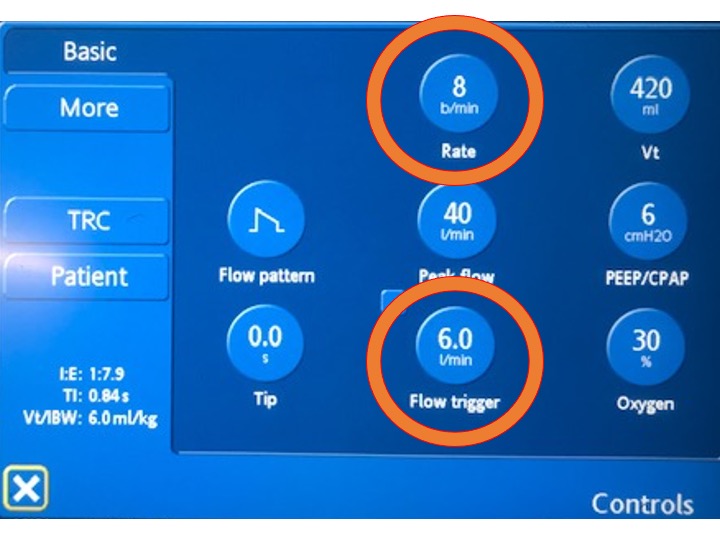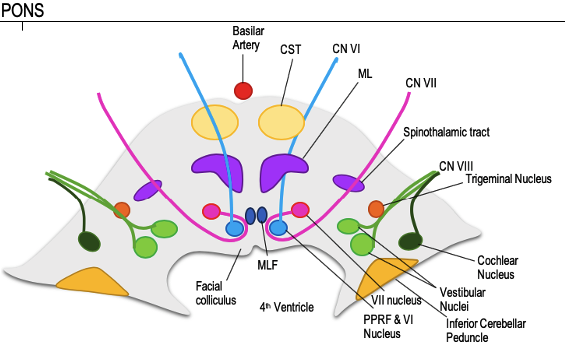
1/
Your patient that is “over breathing” the vent may still be dead by brain criteria.
A #tweetorial #medtweetorial for providers in #criticalcare #EM #neuro #neurocriticalcare. @MedTweetorials
Your patient that is “over breathing” the vent may still be dead by brain criteria.
A #tweetorial #medtweetorial for providers in #criticalcare #EM #neuro #neurocriticalcare. @MedTweetorials
2/
First and foremost, let’s be clear that to be dead by brain criteria, the patient must have cessation of ALL brain function *INCLUDING absence of respiratory drive.*
Thinking "But... I thought you just said...."?
First and foremost, let’s be clear that to be dead by brain criteria, the patient must have cessation of ALL brain function *INCLUDING absence of respiratory drive.*
Thinking "But... I thought you just said...."?
3/
The contradiction here lies in that ventilators are sometimes too sensitive.
The contradiction here lies in that ventilators are sometimes too sensitive.
4/ An example:
Patient suffered a significant, radiographically evident brain injury & had no evidence of other brainstem reflexes. Confounders r/o: no substances (>5 1/2lives of all sedation / paralytics), paCO2 35, T 36.5, and metabolic parameters wnl.
Vent RR set at 14.
Patient suffered a significant, radiographically evident brain injury & had no evidence of other brainstem reflexes. Confounders r/o: no substances (>5 1/2lives of all sedation / paralytics), paCO2 35, T 36.5, and metabolic parameters wnl.
Vent RR set at 14.
6/
1.0L/min is a very sensitive flow trigger. A change in gas flow of 1L/min triggers the inspiratory valve to open and deliver a breath to the patient.
1.0L/min is a very sensitive flow trigger. A change in gas flow of 1L/min triggers the inspiratory valve to open and deliver a breath to the patient.
7/
In brain death, the pt is often in a hyperdynamic cardiovascular state.
Hyperdynamic precordium ➡️
Displacement of intrathoracic volume ➡️
Oscillations that cause movement of gas greater than the trigger sensitivity.
Giving you “breath” in absence of respiratory drive.
In brain death, the pt is often in a hyperdynamic cardiovascular state.
Hyperdynamic precordium ➡️
Displacement of intrathoracic volume ➡️
Oscillations that cause movement of gas greater than the trigger sensitivity.
Giving you “breath” in absence of respiratory drive.
9/
What if 6 L/min isn’t sensitive enough and the patient just can’t generate that flow? Is it unfair? Too high a bar?
@capt_ammonia (who taught me everything I know about this) would advise trying a pressure trigger.
What if 6 L/min isn’t sensitive enough and the patient just can’t generate that flow? Is it unfair? Too high a bar?
@capt_ammonia (who taught me everything I know about this) would advise trying a pressure trigger.
10/
Pressure triggers require the patient generate a sufficient reduction in airway pressure to trigger the ventilator.
Here I switched the patient into a pressure triggered SBT and no respiratory drive was observed.
Pressure triggers require the patient generate a sufficient reduction in airway pressure to trigger the ventilator.
Here I switched the patient into a pressure triggered SBT and no respiratory drive was observed.

11/
But what if that’s just not sensitive enough??
Fair question. That is what the apnea test is for!
This is NEVER a replacement for apnea testing, just a screen to see if the patient is appropriate for formalized testing.
But what if that’s just not sensitive enough??
Fair question. That is what the apnea test is for!
This is NEVER a replacement for apnea testing, just a screen to see if the patient is appropriate for formalized testing.
12/
So, if you think the patient otherwise meets criteria for brain death testing, but the RR doesn't match what you set, please call us to help troubleshoot!
#neurocriticalcare
So, if you think the patient otherwise meets criteria for brain death testing, but the RR doesn't match what you set, please call us to help troubleshoot!
#neurocriticalcare
13/
Getting brain death testing right is one of the single most important things we do and is not only important in giving families closure, but saving lives through organ donation, if pursued.
Thanks @Capt_Ammonia!
#MedEd #neurocriticalcare #zentensivist @EmoryNeuroCrit
Getting brain death testing right is one of the single most important things we do and is not only important in giving families closure, but saving lives through organ donation, if pursued.
Thanks @Capt_Ammonia!
#MedEd #neurocriticalcare #zentensivist @EmoryNeuroCrit
• • •
Missing some Tweet in this thread? You can try to
force a refresh







